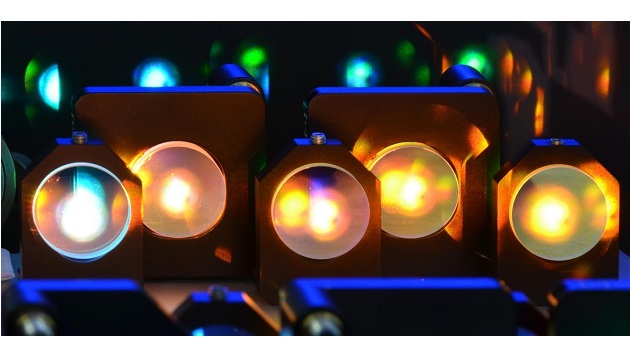A team from Kiel University (CAU) filmed the conversion of light energy into a solid, an exchange that takes place in a matter of femtoseconds (fs), using an ultrafast camera system developed by the researchers. The team was able to observe the energy exchange of the electrons with their environment in real time and distinguish individual phases.
The researchers irradiated a graphite sample with a short, intense light pulse of only 7 fs duration. The different stages in the formation of a Fermi-Dirac distributed electron gas in the graphite, after absorption of the fs laser pulse, were filmed. Graphite is characterized by a simple electronic structure, which allows its fundamental processes to be clearly observed.
The researchers found that the light particles impacting the graphite disturbed the thermal equilibrium of the electrons. Equilibrium describes a condition in which a precisely definable temperature prevails among the electrons. The research team filmed the behavior of the electrons, until equilibrium was restored after about 50 fs.
By filming the motion of the electrons, the researchers were able to observe numerous interactive processes of excited electrons with the impacting photons, as well as atoms and other electrons in the material. On the basis of the film footage, they could even distinguish different phases within this ultrashort period. First, the irradiated electrons absorbed the light energy of the photons in the graphite, transforming photonic energy into electrical energy. Then the energy was distributed to other electrons, before they passed it on to the surrounding atoms. In the final process, the electrical energy was converted into heat, warming up the graphite.
The special camera used to film how the light energy was distributed through the electronic structure, according to the researchers, one of the world’s fastest, has a temporal resolution of 13 fs. “Thanks to the extremely short duration of light pulses used, we are able to film ultrafast processes live. Our investigations have shown that there is a surprising amount of stuff happening here,” said professor Michael Bauer. Bauer and his team developed the camera system with professor Kai Roßnagel and his group.








